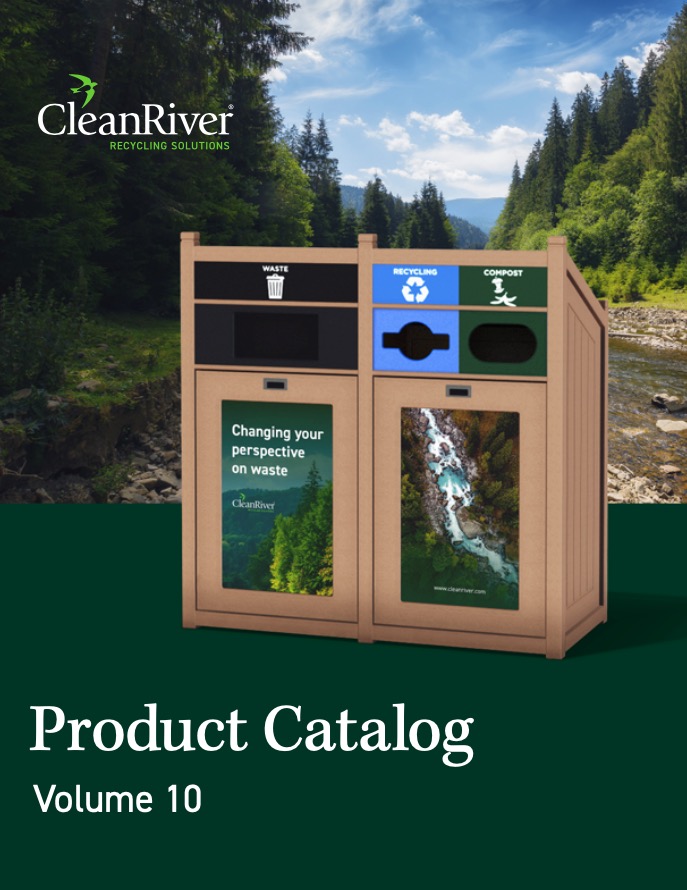Share
Quick Service Restaurants (QSRs) are fast-paced environments focused on efficiency, but they also generate significant waste. Proper waste management can not only enhance sustainability but also align with customer expectations for eco-friendly practices.
Implementing an effective recycling bin system tailored to the unique needs of QSRs is essential for managing waste streams efficiently. This guide will walk you through the process of selecting and implementing recycling bins for your restaurant, ensuring a cleaner and greener operation.
Why Recycling Bins Matter in Quick Service Restaurants
Quick Service Restaurants generate various types of waste, including food scraps, packaging materials, and single-use items. Proper sorting and recycling can:
- Reduce landfill waste: Diverting recyclable and compostable materials from landfills helps decrease the environmental impact.
- Comply with regulations: Many regions have strict waste management regulations that QSRs must adhere to.
- Enhance brand image: Demonstrating commitment to sustainability can attract eco-conscious customers.
- Potential cost savings: Efficient waste management can reduce waste disposal costs.
Assessing Waste Streams in Quick Service Restaurants
Before selecting recycling bins, it’s crucial to assess the types of waste your QSR generates. Typical waste streams include:
- Recyclables: Cardboard, paper, plastics, metals, and glass.
- Organic Waste: Food scraps and compostable packaging.
- General Waste: Non-recyclable and non-compostable materials.
Selecting the Right Recycling Bins
Choosing the appropriate recycling bins involves considering bin type, size, placement, and signage to facilitate effective waste sorting.
1. Bin Types
Single Stream Bins
- Pros: Simple for customers and staff; fewer sorting errors.
- Cons: Requires sorting at a recycling facility; contamination risks.
- Suitable For: Smaller QSRs or those with limited space.
Multi-Stream Bins
- Pros: Encourages proper sorting; reduces contamination.
- Cons: Requires more space; may need customer education.
- Suitable For: Larger QSRs with diverse waste streams.
Compost Bins
- Pros: Reduces food waste; supports sustainable practices.
- Cons: Requires compostable liners; needs regular maintenance.
- Suitable For: QSRs with significant organic waste.
General Waste Bins
- Pros: Captures non-recyclable waste.
- Cons: This should be minimized through effective recycling and composting.
- Suitable For: All QSRs, as a last resort option.
2. Bin Size and Capacity
Small Bins
- Pros: Fit under counters; ideal for low waste areas.
- Cons: Require frequent emptying.
- Suitable For: Drive-thru windows, and condiment stations.
Medium Bins
- Pros: Balance between capacity and footprint.
- Cons: Need regular monitoring.
- Suitable For: Dining areas, kitchen prep areas.
Large Bins
- Pros: Handle high volumes of waste; fewer emptying cycles.
- Cons: Require more space; less flexible in placement.
- Suitable For: Back-of-house, high-traffic areas.
3. Placement and Accessibility
Customer Areas
- Considerations: Bins should be easily accessible and clearly marked to encourage proper use. Placing bins near exits, dining areas, and condiment stations is effective.
- Tip: Use consistent colour coding and clear signage to guide customers.
Back-of-House
- Considerations: Bins should be conveniently located near prep and cooking areas to streamline waste sorting. Ensure bins are easily accessible to staff.
- Tip: Integrate bins into kitchen workflows to minimize disruption and improve efficiency.
Drive-Thru
- Considerations: Place small bins for customer waste at the end of the drive-thru to capture immediate disposal.
- Tip: Provide clear instructions or staff guidance to assist customers in using bins correctly.
4. Signage and Education
Clear and informative signage is essential for effective waste sorting. Consider the following:
- Visual Cues: Use icons and images to indicate the types of waste that go into each bin.
- Colour Coding: Employ consistent colours across bins to represent different waste streams (e.g., blue for recyclables, green for compost, black for general waste).
- Instructions: Provide simple, step-by-step instructions to guide customers and staff in proper sorting.
- Education: Train staff regularly on waste sorting procedures and the importance of sustainability.
Implementing Your Recycling Bin System
- Pilot Program
- Start Small: Implement the recycling bin system in a few key areas to evaluate effectiveness and gather feedback.
- Monitor and Adjust: Observe usage patterns and make necessary adjustments to bin placement, size, or signage.
- Full-Scale Implementation
- Roll Out: Expand the system to the entire restaurant, incorporating lessons learned from the pilot.
- Engage Staff: Involve staff in the implementation process and provide ongoing training.
- Promote to Customers: Communicate the new recycling initiatives to customers through in-store displays and digital channels.
- Monitoring and Improvement
- Regular Audits: Conduct waste audits to assess the system’s performance and identify areas for improvement.
- Feedback Loops: Encourage feedback from both staff and customers to refine the system.
- Continuous Education: Keep educating staff and customers about recycling best practices and updates to the system.
Conclusion
Implementing a well-organized recycling bin system in your Quick Service Restaurant not only supports environmental sustainability but also aligns with customer values and regulatory requirements. By selecting the right bins, placing them strategically, and providing clear guidance, you can significantly improve waste management and contribute to a cleaner, greener community.
Ready to make a change? Our goal is to turn fast food into sustainable goodness—one sorted bin at a time! Discover the ideal recycling bins for your restaurant with CleanRiver’s Product Finder Tool.

